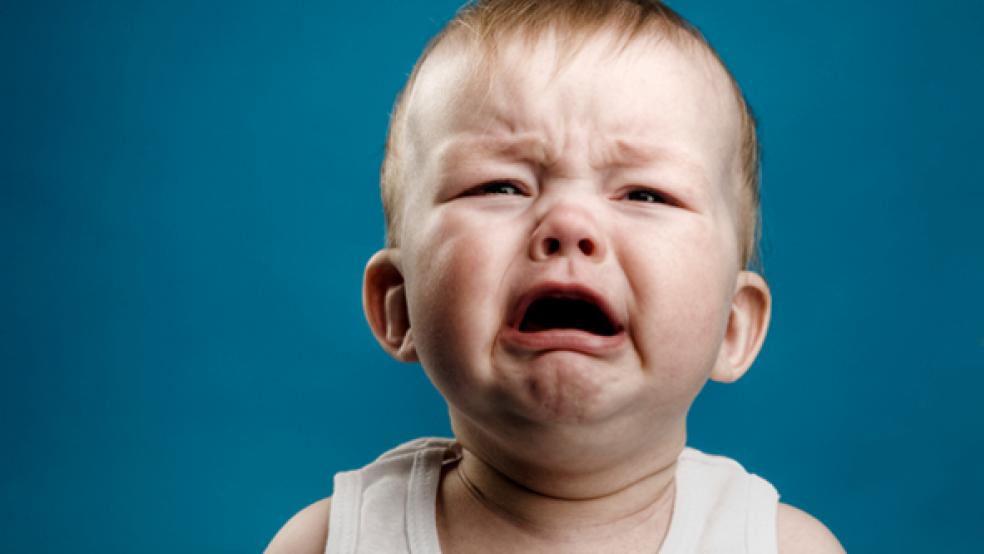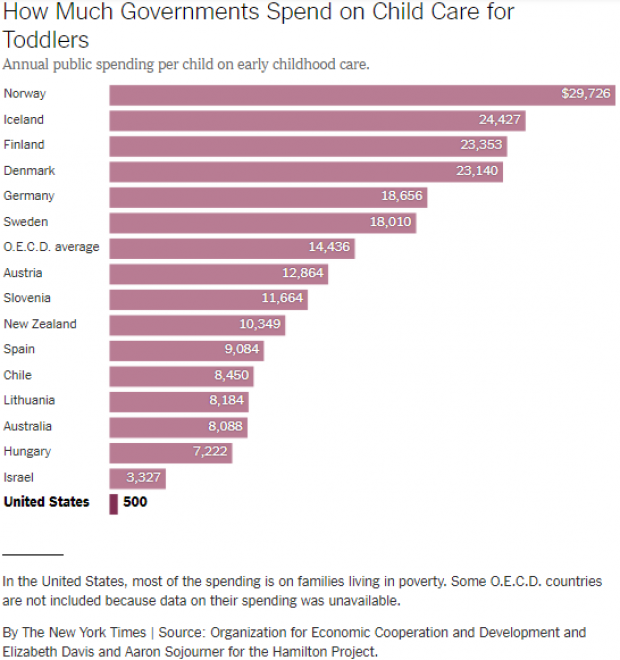The United States provides far less financial support for toddler care than other developed nations, writes Claire Cain Miller at The New York Times:
“The U.S. spends 0.2 percent of its G.D.P. on child care for children 2 and under — which amounts to about $200 a year for most families, in the form of a once-a-year tax credit for parents who pay for care.
“The other wealthy countries in the Organization for Economic Cooperation and Development spend an average of 0.7 percent of G.D.P. on toddlers, mainly through heavily subsidized child care.”
On the other hand, Cain Miller notes, the United States spends more than any OECD country except Luxembourg on elementary school through college. “We as a society, with public funding, spend so much less on children before kindergarten than once they reach kindergarten,” Elizabeth Davis, an economist studying child care at the University of Minnesota, tells Cain Miller. “And yet the science of child development shows how very important investment in the youngest ages are, and we get societal benefits from those investments.”
The pandemic has highlighted the importance — and economic value — of child care, and Democrats are looking to provide more support for younger children as part of their bill to expand the social safety net, but the details of that bill, and options to cut costs, are still being negotiated.






